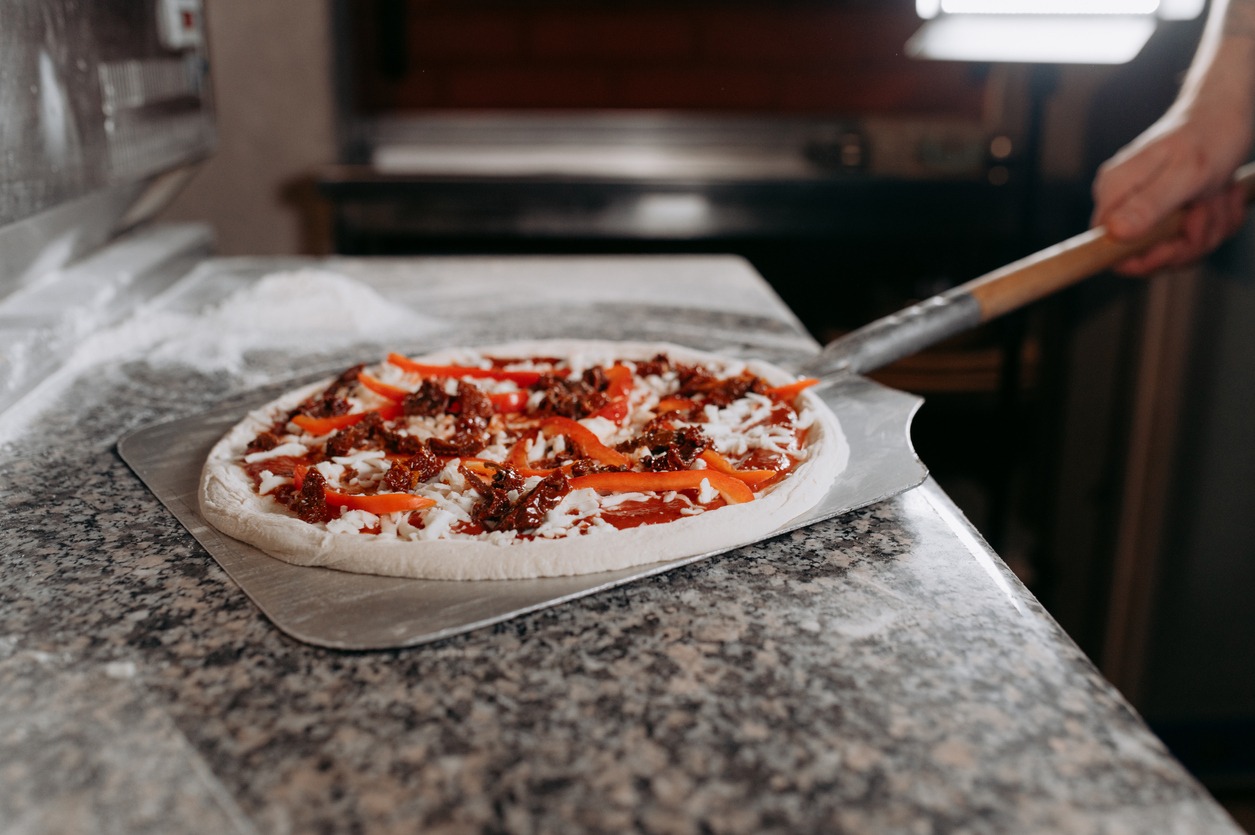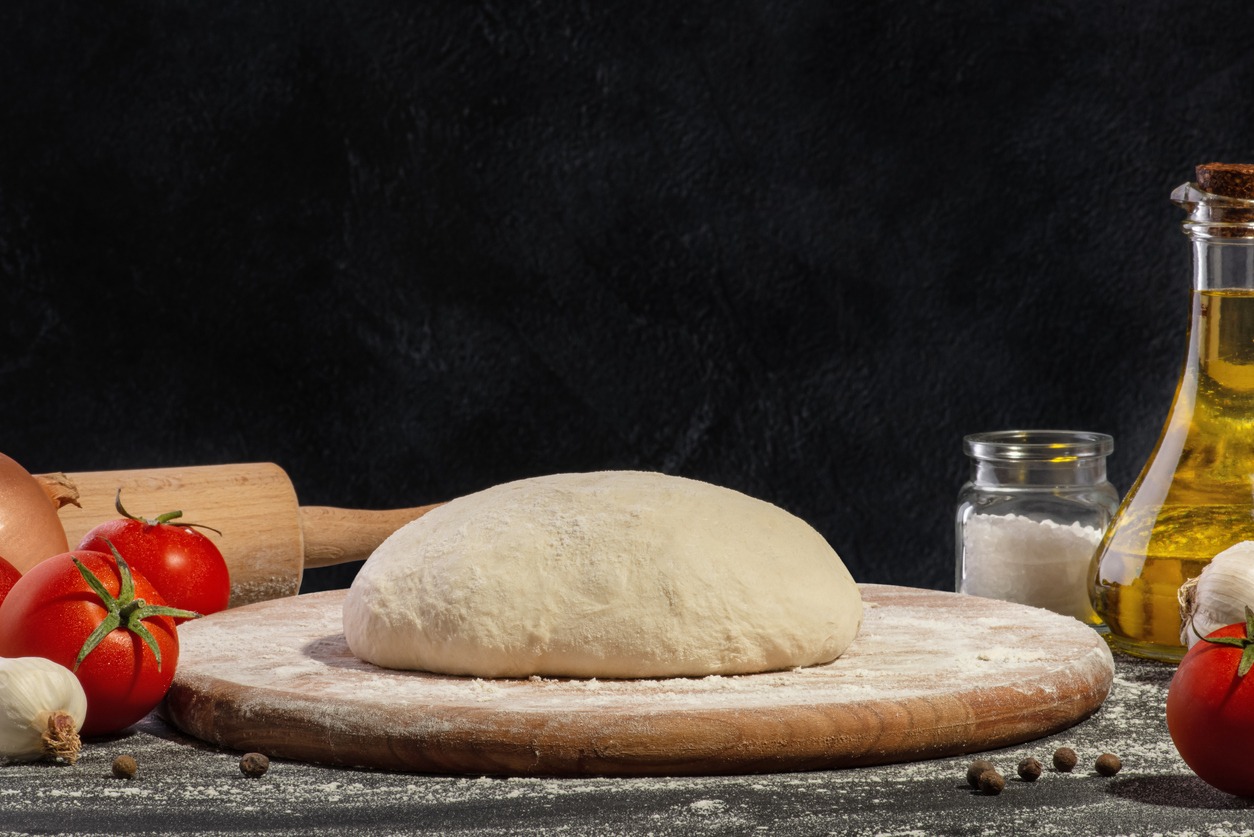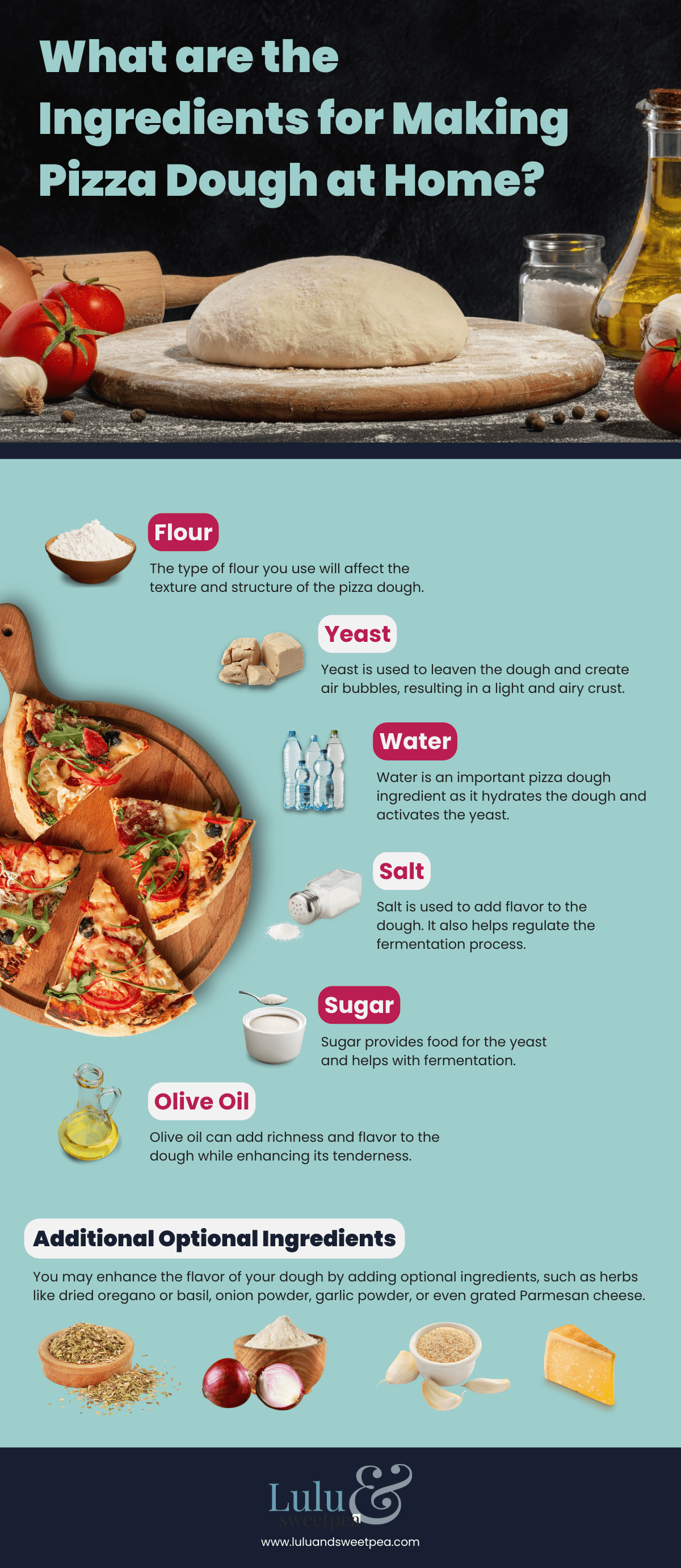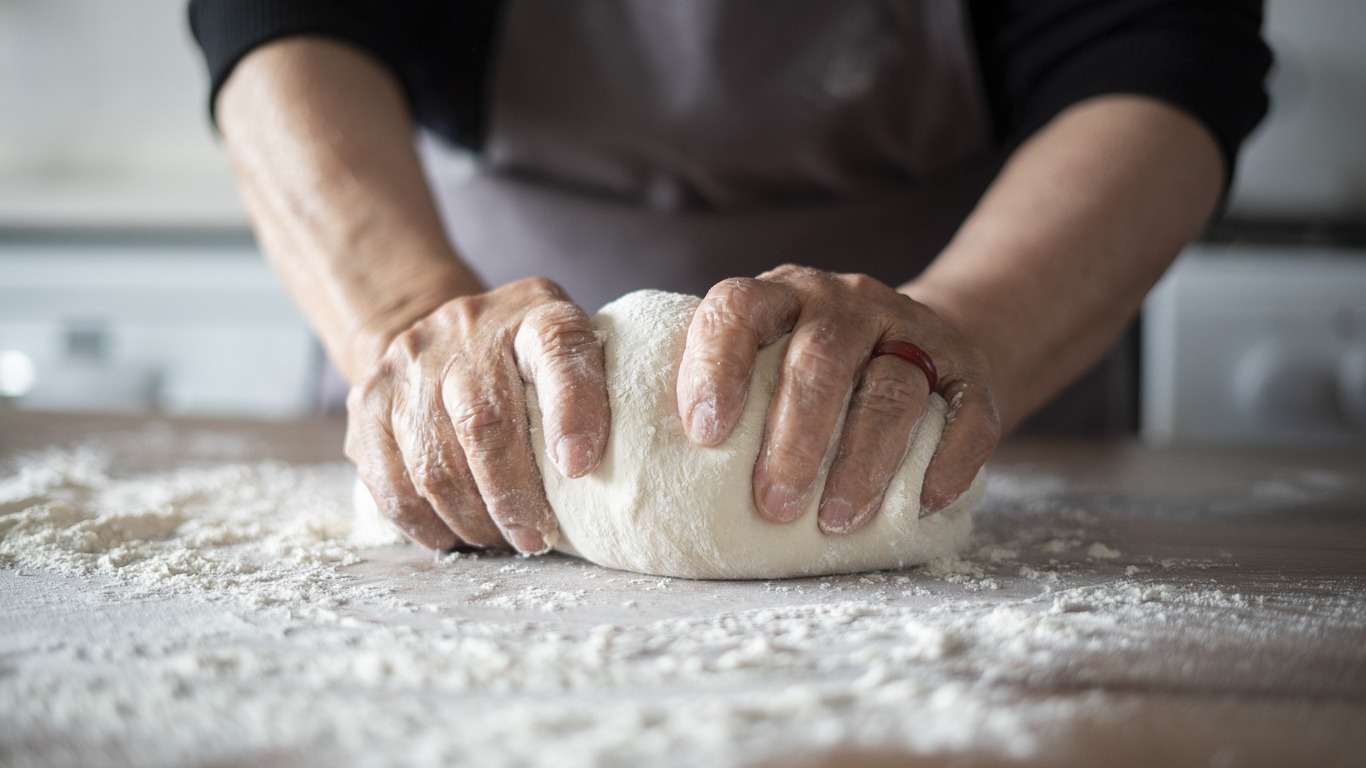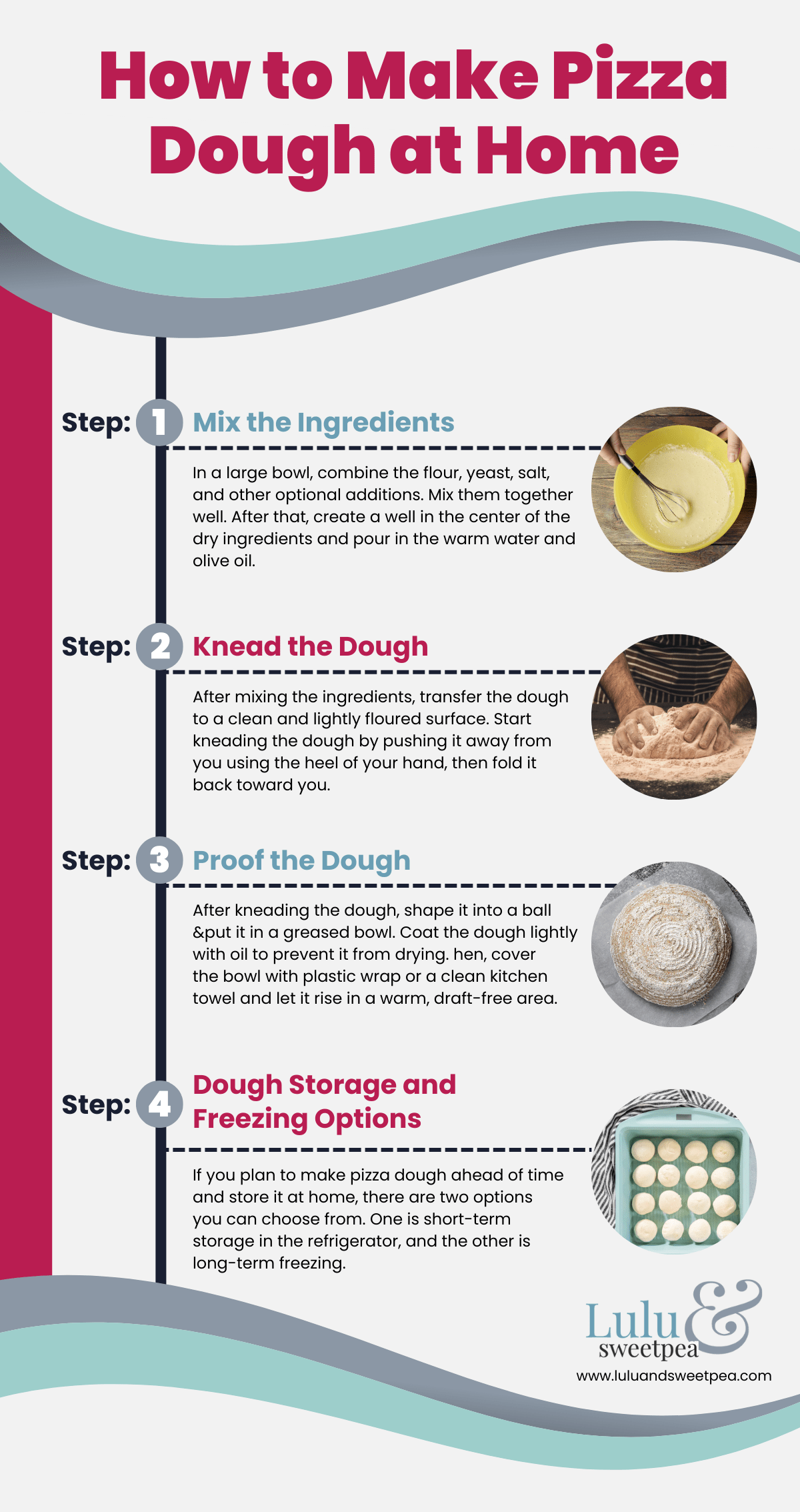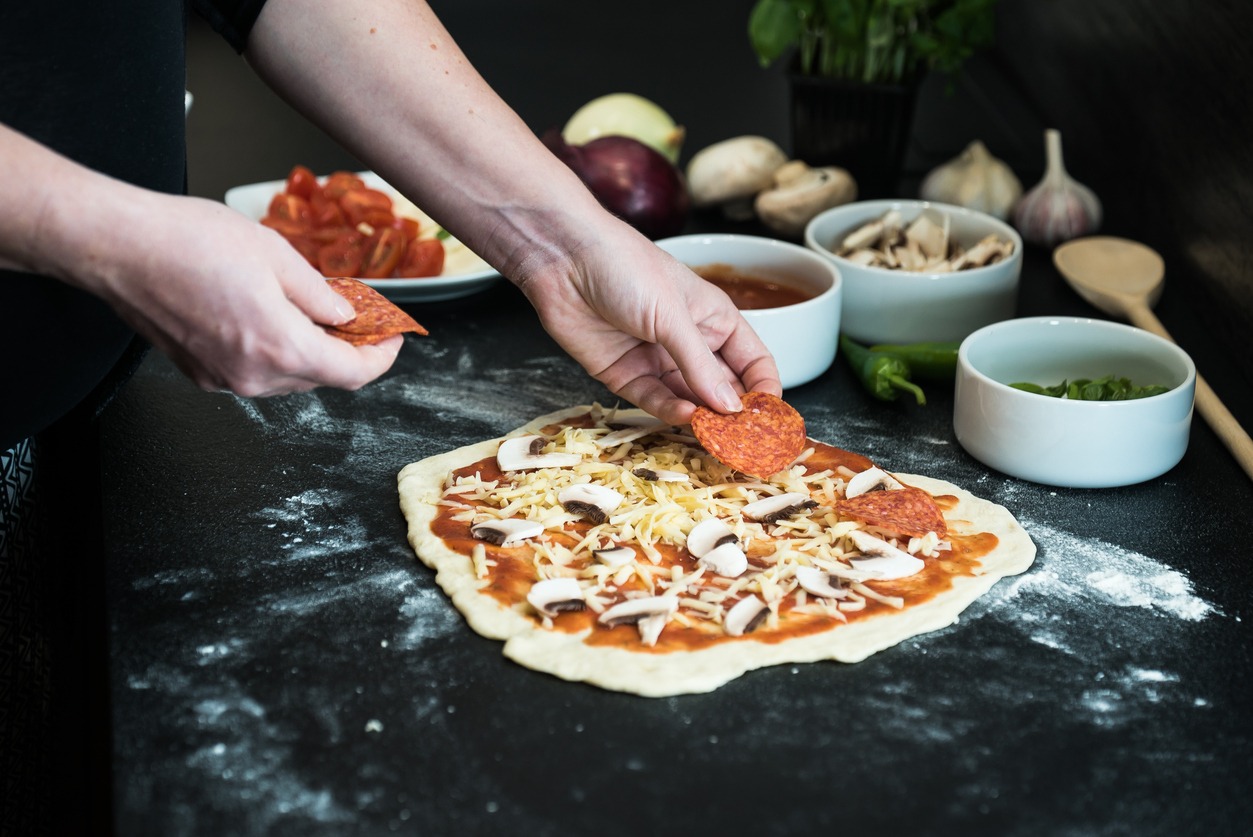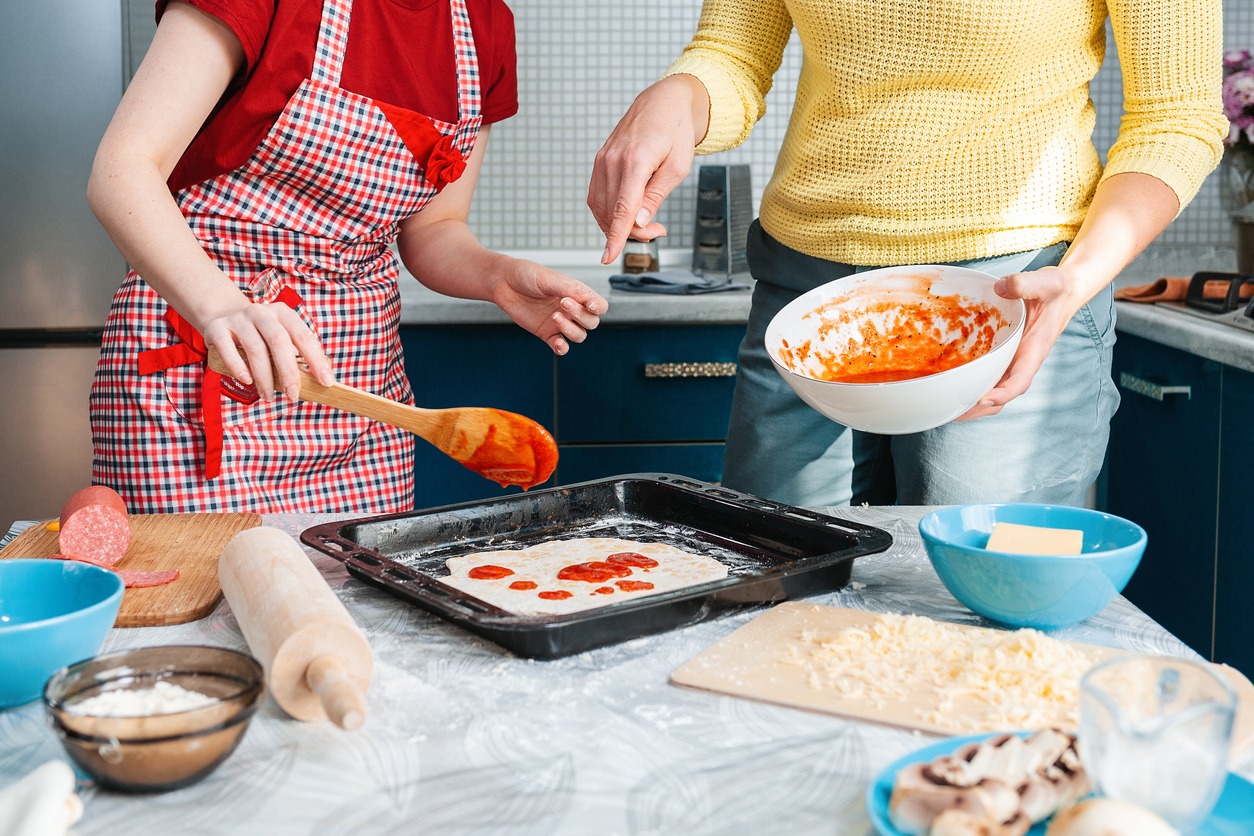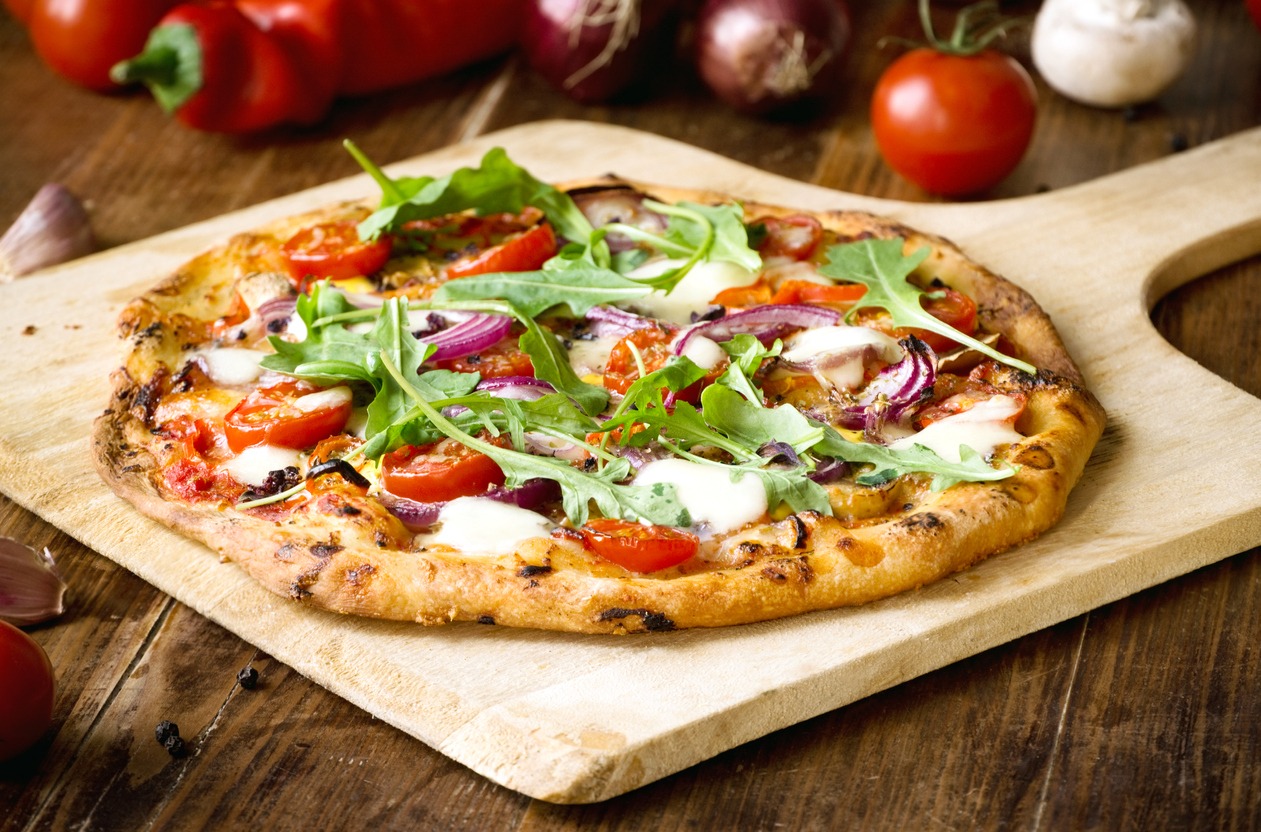Pizza is one of the most popular foods in the world and the favorite of many people, especially in the United States. While it is enjoyable to eat at pizza parlors and convenient to order pizza at home, others are taking the process of making pizza into their own hands. We also believe that a good pizza is among the most rewarding things you can make at home. Aside from that, it can also be a great bonding activity for your whole family.
The key to making a great pizza is the right combination of sauces and toppings. But if you want to learn more about making your own pizza, you’re in the right place. In this article, we are going to provide you with the ultimate guide to making pizza at home. In this guide, we are going to explore the art of crafting homemade pizza from scratch, which will allow you to create your own customized and flavorful pies.
Important Equipment and Tools Needed for Making Pizza at Home
One of the important things, before you dive into the world of homemade pizza, is having all the essential equipment and tools. This will ensure a smooth and enjoyable cooking experience. To help you, below are some of the key items that you will need to make pizza at home:
Mixing Bowl
It is essential to have a large mixing bowl that you can use to combine the dough ingredients and allow them to rise. Pick a bowl that is sturdy and spacious enough to hold the expansion of the dough. Below are a few examples you can check out:
OXO Good Grips 3-Piece Stainless-Steel Mixing Bowl Set
RSVP International Endurance Stainless Steel Mixing Bowls
Bellemain Stainless Steel Non-Slip Mixing Bowls with Lids
Measuring Tools
For consistent results, accurate measurements are very important. Therefore, you need to have measuring cups and spoons on hand to measure ingredients like water, flour, yeast, and other spices. Below are a few examples that you can choose from:
Pyrex 2-Piece Glass Measuring Cup Set
EWFEN Measuring Cups and Spoons Set
EWAGOA Measuring Cups and Spoons Set
Kitchen Scale
When it comes to flour and other dry ingredients, you need to be more precise in measuring them when making pizza. Therefore, investing in a kitchen scale can be beneficial as it ensures accuracy and helps achieve consistent dough texture. Below are some examples of kitchen scales that you might want to check out:
Ozeri Pronto Digital Multifunction Kitchen and Food Scale
Cuisinart Precision Chef Bowl Electronic Kitchen Scale
Wooden Spoon / Dough Scraper
A wooden spoon or dough scraper is useful for mixing and combining the dough ingredients. Aside from that, you can also use it to scrape the dough off the working surface. Below are some examples to help you pick:
Wooden Spoon for Cooking, Mixing, and Serving
Stand Mixer / Hand Mixer
It is actually possible to mix the pizza dough by hand. However, using a stand mixer or hand mixer that has a dough attachment can help you save time and effort. They are very helpful especially when working with larger batches of dough. Below are a few examples of stand mixers or hand mixers to help you choose:
Hamilton Beach Electric Hand Mixer with Dough Hooks
Braun Electric Hand Mixer with Dough Hooks to Knead
FRIGIDAIRE Retro Stand Mixer with Dough Hook
Hamilton Beach Professional All-Metal Stand Mixer with Dough Hook
Pizza Stone / Baking Steel
A pizza stone or baking steel can help create a crispy crust by distributing heat evenly and absorbing excess moisture from the dough. You just have to preheat it in the oven before baking your pizza to get the best results. Below are some examples of pizza stones or baking steels that you might want to check out:
Augosta Pizza Stone for Oven and Grill
Home Edge Pizza Stone Set for Pizza
Nerd Chef Steel Stone for Pizza Baking
Pizza Steel PRO by Hans Grill Conductive Metal Baking Sheet for Cooking Pizzas
Pizza Peel
A pizza peel is a flat, paddle-like tool that is used to transfer the prepared pizza onto the hot pizza stone or baking steel in the oven. It will help you slide the pizza easily and ensure that it maintains its shape during the transfer. Below are a few examples of pizza peel to help you pick:
Pizza Peel Aluminum Pizza Spatula
Cieso Pizza Peel with Detachable Wood Handle
Zulay Authentic Bamboo Pizza Peel for Transferring and Serving
Rolling Pin / Dough Docker
You will use a rolling pin to roll out the pizza dough to the desired thickness. Aside from that, you can also use a dough docker to create small holes in the dough to prevent excessive rising and air bubbles. Below are some examples to help you choose:
WALFOS French Rolling Pin Dough Roller
Tianman Marble Rolling Pin Pizza Roller
Professional Pizza Dough Docker Roller
Pizza Cutter
After baking the pizza, you need to use a pizza cutter before you serve it. This will help you slice it into perfect portions. Below are some examples of pizza cutters to help you pick:
KitchenAid Classic Pizza Wheel
OXO Good Grips Large Pizza Wheel and Cutter
Kitchen Star Rocker Style Pizza Cutter
What are the Ingredients for Making Pizza Dough at Home?
The dough is the foundation of any great pizza. It means that the ingredients that you choose and how you combine them will greatly affect the flavor and texture of your crust. To guide you, below are the ingredients that you need for making pizza dough at home:
Flour
The type of flour you use will affect the texture and structure of the pizza dough. The common choice of many people is all-purpose flour. However, you can also experiment with bread flour for a chewy crust. You may also try using a combination of different flours for added depth of flavor. If you are on a gluten-free diet, there are also gluten-free flour blends available.
Yeast
Yeast is used to leaven the dough and create air bubbles, resulting in a light and airy crust. You can use either active dry yeast or instant yeast when making pizza dough. However, keep in mind that instant yeast does not require proofing and it can be added directly to the dry ingredients.
Water
Water is an important pizza dough ingredient as it hydrates the dough and activates the yeast. The water temperature is crucial as it needs to be warm to encourage yeast activation but not too hot to kill it. You may use water that is around 105-115°F or 40-46°C.
Salt
Salt is used to add flavor to the dough. It also helps regulate the fermentation process. It is better to use fine-grained sea salt or kosher salt for best results.
Sugar
Sugar provides food for the yeast and helps with fermentation. Aside from that, it also adds a touch of sweetness to the dough. Some of the common options when making pizza dough at home include granulated sugar, honey, or even malt syrup if you want to achieve a more complex flavor.
Olive Oil
Olive oil can add richness and flavor to the dough while enhancing its tenderness. It also helps achieve a crispier crust. Using extra-virgin olive oil is a great choice, but other neutral oils like canola and vegetable oil can also be used.
Additional Optional Ingredients
You may enhance the flavor of your dough by adding optional ingredients, such as herbs like dried oregano or basil, onion powder, garlic powder, or even grated Parmesan cheese.
When using the ingredients we listed here, it is important to follow a specific recipe and measurements to ensure the right texture and consistency of the dough. The ratios of water, flour, yeast, and salt may vary depending on your desired outcome.
How to Make Pizza Dough at Home
When making pizza dough, every step contributes to the texture, flavor, and overall quality of your crust, from the mixing process to the final result. In order to make the perfect pizza crust, you must master the art of making pizza dough. Below are some of the important steps that will help you make pizza dough at home:
Step 1: Mix the Ingredients
In a large bowl, combine the flour, yeast, salt, and other optional additions. Mix them together well. After that, create a well in the center of the dry ingredients and pour in the warm water and olive oil. Then, slowly add the dry ingredients to the wet ingredients using a wooden spoon or a stand mixer with a dough hook attachment. Mix thoroughly until the dough begins to come together.
Step 2: Knead the Dough
After mixing the ingredients, transfer the dough to a clean and lightly floured surface. Start kneading the dough by pushing it away from you using the heel of your hand, then fold it back toward you. After that, rotate the dough a quarter turn and repeat the process. Continue kneading the dough for about 10 minutes until it becomes smooth and elastic, and springs back when lightly pressed with your finger. If you choose to use a stand mixer, you can knead the dough on low speed for the same duration.
Step 3: Proof the Dough
After kneading the dough, shape it into a ball and put it in a greased bowl. Coat the dough lightly with oil to prevent it from drying. Then, cover the bowl with plastic wrap or a clean kitchen towel and let it rise in a warm, draft-free area. This way, the yeast will ferment and the dough will double in size. The dough proofing time may vary, but it usually takes about 1 to 2 hours.
Step 4: Dough Storage and Freezing Options (Optional)
If you plan to make pizza dough ahead of time and store it at home, there are two options you can choose from. One is short-term storage in the refrigerator, and the other is long-term freezing. If you choose the first one, you can refrigerate the dough after proofing for up to 24 hours to slow down the fermentation process. Punch down the risen dough and wrap it tightly in plastic wrap and place it in the refrigerator. But make sure that you bring it to room temperature before using it.
For the long-term freezing option, you can divide the dough into individual portions after kneading and before proofing. Shape each portion into a ball and coat them lightly with oil and place them in separate airtight containers or freezer bags. Thaw the frozen dough in the refrigerator overnight or at room temperature for a few hours before using.
Ingredients for Pizza Sauce and Toppings
After learning about the dough-making ingredients and steps, let us move on to the pizza sauce and toppings. Most of us don’t give much thought to pizza sauce as they are always just plain red sauce. But it is actually one of the things that set the stage for your whole pizza. The sauce actually dictates which toppings should be the key performers.
When it comes to pizza toppings, there are actually endless possibilities that you can choose from and we can’t really list them all in just one article. But to give you some ideas, below are some essential ingredients for pizza sauce and toppings that you can choose from:
Traditional Tomato Sauce
If you want to go for traditional tomato sauce for your homemade pizza, you can use canned crushed tomatoes or tomato sauce. Make sure that you look for high-quality ones that do not have any added seasonings or flavors. You may also choose to add some tomato paste as it can enhance the richness and thickness of the sauce. For extra flavor, you can add some fresh minced garlic or garlic powder, olive oil, and Italian herbs like dried oregano, basil, thyme, or a pre-mixed Italian seasoning.
Other Sauce Options
If you want to create a unique homemade pizza using other sauces, there are also many options to choose from. For example, you can make a pesto sauce for your pizza using ingredients like fresh basil, garlic, pine nuts, Parmesan cheese, and olive oil. This can add a vibrant and herbaceous flavor to the sauce.
Aside from that, you may also opt for barbecue sauce for your pizza. It is sweet and tangy and can be used as a base for barbecue chicken or other meaty pizzas. Another great pizza sauce option is white sauce. It is a creamy and savory alternative to white sauce. Most of the time, it is made using a mixture of butter, flour, milk, or cream.
Cheese
Cheese is another popular ingredient when it comes to pizza. There are so many types of cheeses that you can use when making pizza at home. For a classic homemade pizza, you can never go wrong with mozzarella. It can provide your pizza with a gooey, stretchy texture when melted. But if you want other options, you may also try using parmesan cheese, cheddar, fontina, provolone, goat cheese, or even blue cheese. Doing this may help you add depth and complexity to your pizza toppings.
Vegetable and Fruit Toppings
Most of us are familiar with vegetables on pizza. Also, any fruit besides pineapple is an unexpected topping. However, if you pair them right, fruits can actually add a delicious finish to your homemade pizza. Both fruits and vegetables can provide extra nutrients to your favorite food, too. Therefore, you should challenge yourself to add vegetable and fruit toppings to your pizza. Some of the most popular veggies and fruits used are sliced bell peppers, onions, mushrooms, tomatoes, olives, artichokes, spinach, and fresh basil.
Meats
For many people, pizza is not complete without any meat on it. There are also endless options when it comes to the meat toppings that you can add to your homemade pizza. But some of the best ones include pepperoni, Italian sausage, cooked bacon, ham, chicken, or ground beef. Just make sure that these toppings are cooked before you add them to the pizza.
Fresh Herbs, Spices, and Seasonings
You may also sprinkle some fresh herbs on top of your pizza. Some of the best options include oregano, basil, thyme, or rosemary. You may also add a sprinkle of dried chili flakes, garlic powder, onion powder, or dried oregano for an extra flavor kick.
When choosing pizza toppings, it is important to balance the flavors and not overload the pizza with too many toppings as it may affect the overall bake and texture. You may also try to experiment with different combinations and quantities to find your favorite flavor combinations.
Assembling and Baking Pizza at Home
After making the dough and preparing the sauce and toppings, the next step is assembling your pizza and baking it to perfection. To help you through this, below are the important steps that you may follow:
Step 1: Preheat the Oven
Place the pizza stone or baking steel in the middle rack of your oven. Then, preheat the oven to the highest temperature possible, around 475-500°F or 245-260°C. Preheating the pizza stone or steel is important to achieve a crispy pizza crust.
Step 2: Prepare Your Workspace
Dust a clean surface or a pizza peel with flour or cornmeal to prevent the dough from sticking. If you are using a pizza peel, this is essential to facilitate the easy transfer of the assembled pizza.
Step 3: Shape the Dough
Get your proofed dough and punch it down gently to release excess air. Then, place it on the floured surface and use your hands or a rolling pin to stretch or roll it into the shape and thickness that you want. For optimal baking, you can keep the dough relatively thin, about ¼-inch or 0.6cm thick.
Step 4: Transfer the Dough
Transfer the shaped dough carefully onto the floured pizza peel and make sure that it can slide off easily. If you do not have a pizza peel, you can assemble the pizza directly on a pizza stone or a baking sheet lined with parchment paper.
Step 5: Add the Sauce and Toppings
Using a spoon, get the desired amount of sauce and put it into the center of the dough. Then, use the back of the spoon or ladle to spread the sauce evenly, leaving a border around the edges for the crust. After that, sprinkle your chosen cheese/s over the sauce followed by all your selected toppings. Make sure that the toppings are evenly distributed for a balanced flavor.
Step 6: Transfer to the Oven
If you are using a pizza peel, give it a gentle shake to ensure that the pizza is not sticking. Then, slide the pizza carefully onto the preheated pizza stone or baking steel in the oven. But if you are using a baking sheet, place it with the assembled pizza directly into the preheated oven.
Step 7: Bake the Pizza
Bake the pizza for about 10-15 minutes, or until the crust is golden brown, the cheese is melted and bubbly, and the toppings are cooked to your desired level. Keep a close eye on the pizza to avoid burning. Baking times may vary depending on your oven and the thickness of the dough.
Step 8: Remove the Pizza from the Oven and Serve
Once the pizza is cooked to perfection, carefully remove it from the oven using a pizza peel or oven mitts. Then, transfer the pizza to a cutting board and let it rest for a few minutes to allow the cheese to set. After that, slice the pizza into wedges or squares using a pizza cutter or a sharp knife.
Serve your delicious homemade pizza immediately while it’s still hot and fresh. You may also pair it with your favorite side dishes, such as a fresh salad or garlic bread. Don’t forget to savor each bite and share the joy of your homemade creation with family and friends.
Conclusion
Making pizza at home is a delightful and rewarding experience that allows you to unleash your creativity in the kitchen. With the right equipment, quality ingredients, and a little practice, you can achieve delicious and personalized pizzas that rival those from your favorite pizzeria.
Remember that making pizza is all about having fun and experimenting with flavors. Don’t be afraid to try new combinations of toppings, sauces, and cheeses. The possibilities are endless, and you can tailor your pizzas to suit your personal preferences. So, gather your ingredients, knead that dough, and get ready to create mouthwatering pizzas right in the comfort of your own kitchen. We hope this article helped you learn more about making pizza at home.

